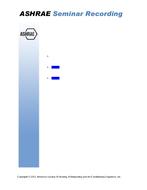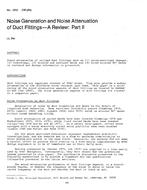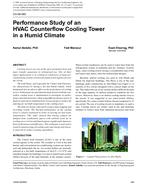Click here to purchase
A CFD analysis of a displacement ventilation system for reduced cooling load conditions is performed using the previously developed CFD model of a hospital patient room. The previous analysis was performed for design (high) cooling load conditions. In this study the effect of supply air flow rate and supply air temperature on the performance of HVAC system is evaluated. As expected the previous levels of high airflow rate with low supply air temperature, which were suitable for the high load conditions, would make the occupants feel too cold under the reduced cooling load. This analysis indicates reducing the airflow rate and also at the same time increasing the supply air temperature would make occupants feel warm and the stratified layer of the hot air could descend too close to the occupied zone. The operating conditions of high supply airflow rate with increased supply air temperature and reduced airflow rate with reduced supply air temperature show promise of creating reasonable level of thermal comfort in the occupied zone. However, the operating conditions of the latter case would require less fan and thermal energy to provide similar level of thermal comfort. These conditions would also keep the stratified thermal layer close to the ceiling away from the occupied zone. This analysis further indicates under the reduced supply airflow rate (2 ACH), instead of the room exhaust, the bathroom exhaust through the bathroom door opening would dominate the flow path of the exit air and the resulting flow path of the airborne particles. The supply air flow rate of 2 ACH does not meet the minimum requirement of ASHRAE/ASHE Standard 170-2017 of 6 ACH for the occupied zone for displacement ventilation.
Citation: 2019 Annual Conference, Kansas City, MO, Conference Papers
Product Details
- Published:
- 2019
- Number of Pages:
- 8
- Units of Measure:
- Dual
- File Size:
- 1 file , 1.4 MB
- Product Code(s):
- D-KC-19-C019


